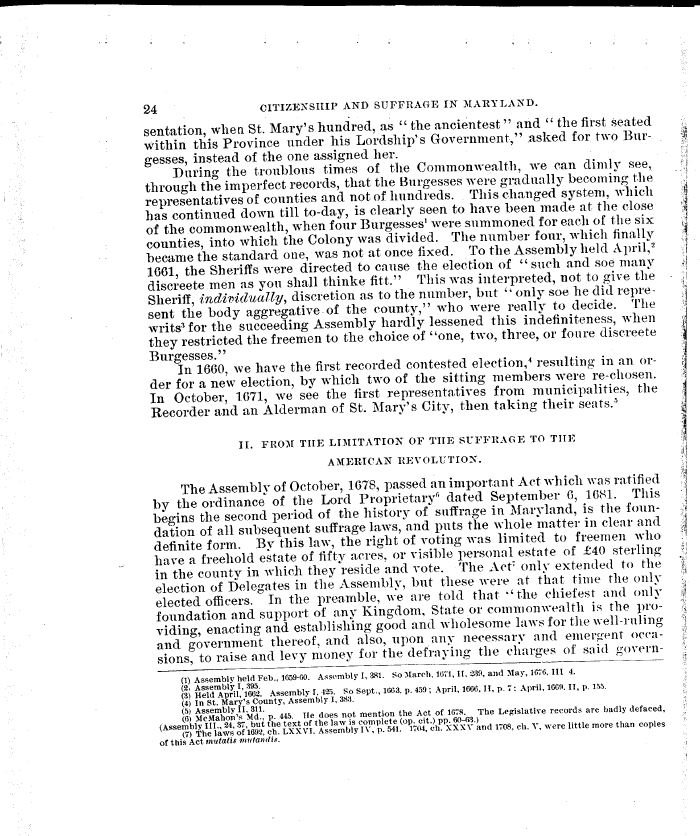|
24 CITI7.EISIIII' AND SUFFRAGE IN -INIARYLAND.
sentation, when St. Mary's hundred, as "the ancientest" and " the first.
seated
within this Province under his Lordship's Government," .asked for two Bur-
gesses, instead of the one assigned her.
Daring the Iruublons times of the Commonwealth, we can (1in11y see,
through the imperfect records, that the Burgesses were gradually becoming
tile
representatives of counties and not of hundreds. 'this changed system, which
has continued down till to-day, is clearly seen to have been made at the
close
lof the commonwealth, when four Burgesses' were summoned for each of the six
counties, into which the Colony was divided. The number four, which finally
became the standard one, was not at once fixed. To the Assembly held
:1pri1,2
1661, the Sheriffs were directed to cause the election of " such and soe
many
discreete men as yon shall thinke fitt." This was interpreted, not to live
the
Sheriff, individually, discretion as to the number, but " only soe he did
repre-
sent the body aggregative . of the counter," who were really to decide. The
writs for the succeeding Assembly hardly lessened this indefiniteness, when
they restricted the freemen to the choice of "one, two, three, or foure
discreete
Burgesses."
In 1660, we have the first recorded contested election,' resulting in an or-
der for a new election, by which two of the sitting members were re-chosen.
In October, 1.671, we see the first representatives from municipalities, the
Recorder and an Alderman of St. Mary's City, then taking their seats.'
11. FROM THE LIMITATION OF THE SUFFRAGE rO THE
AIIER.ICAN REVOLUTION.
I
The Assembly of October, 1678, passed an important Act which was ratified
by the ordinance of the Lord Proprietary` dated September G, 1681. This
begins the second period of the history of suffrage in AIa.ryland, is the
f |

